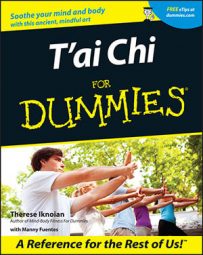T’ai Chi is not only about the movements (or forms), but about the principles by which you practice the movements. If you tap into the principles of T'ai Chi properly, you discover the stillness in the movement and, in turn, the energy that flows through your spirit. If you don’t tap into the principles, T’ai Chi becomes nothing but a series of dance steps without a soul.
Slow down. This is the Grand Ultimate Principle because you begin to find all the benefits of T'ai Chi if you go slowly.
Take it easy. Forcing things is an antithesis in T’ai Chi. Physical and mental stress makes you tense up and get all the forms wrong.
Think in curves. Movement in T’ai Chi is always curved and circular, never straight and linear. This allows one movement to flow seamless to the next and promotes a better flow of your chi (energy).
Be simple. Live fully. Live naturally. And be simple at your core.
Sink lower. In other words, let your knees relax and bend at the joint. This grounds you, lets energy flow from the earth into your body, and allows you to overpower your opponent by getting beneath his or her energy and center.
Balance your movements. Just as all things in the universe are reciprocal, T’ai Chi is about balancing your moves — for example, forward and back, weight-bearing and non-weight-bearing, and reach and pull back. This is based on the ancient Chinese philosophy of yin and yang, in which all living things are opposing yet complementary.
Stay balanced. Both physically and mentally, good balance is essential to good T’ai Chi — and to life.
Move the whole package. Your whole body, not just a wrist or leg, is a part of T'ai Chi movement. Think action-reaction. Think flow.
Go with the flow. Think smooth as silk. Move and think as if you are on wheels. Not herky-jerky with breaks. That cuts into your energy flow.
Stay rooted. Always feel that you are firmly planted on the ground. This applies not only to T’ai Chi but also to life — what else is new?
Like the forms and names in T’ai Chi, the list of principles varies slightly depending on the school, teacher, or style. No set list is handed down from generation to generation. But if you look and listen closely, you find that the core of any set of T'ai Chi principles is identical.

